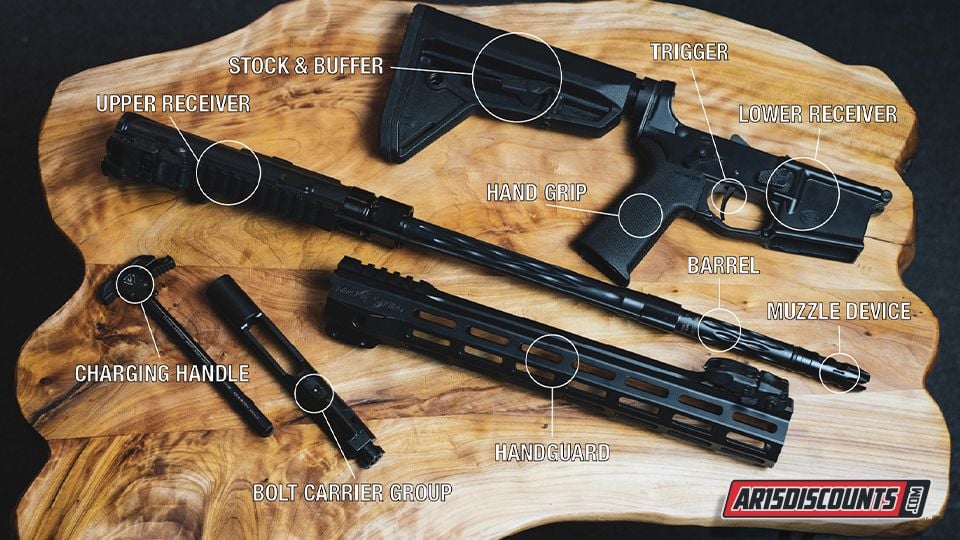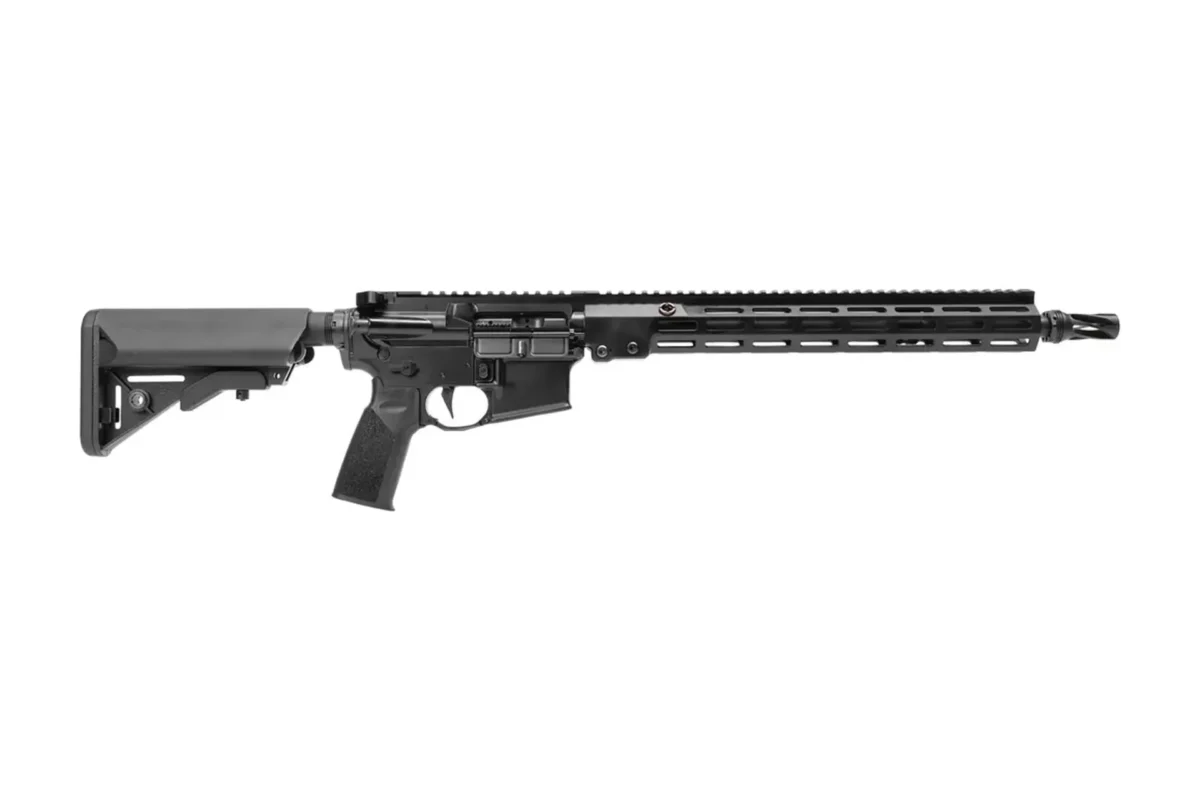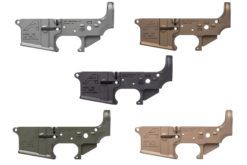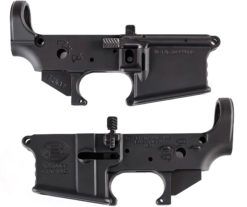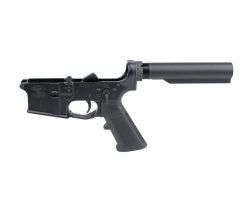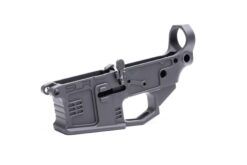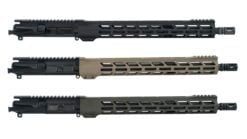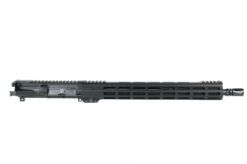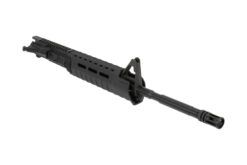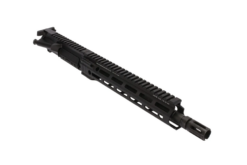Uncategorized
Parts of an AR-15: A Diagram
Table of contents
Parts of an AR-15 — Lower & Upper Receiver Breakdown
Understanding the Parts of an AR-15 clearly makes building, maintaining, and upgrading your rifle easier.
This guide splits the gun into two assemblies: the Lower Receiver and the Upper Receiver.
It covers only the parts you specified, and they are placed under the correct receiver for clarity.
Each section explains the part’s function, why it matters, and upgrade considerations.
Where applicable, I link to brand pages and category pages on AR15Discounts.
These links aid compatibility checks and provide quick access to recommended components and accessories.
Quick orientation
The AR-15 is commonly discussed as two halves: the lower receiver (the serialized part that houses controls and the buffer system) and the upper receiver (the action and barrel assembly). Focusing on the right parts under the correct receiver helps prevent confusion during purchases, assembly, and troubleshooting. This article looks only at the items you requested — FCG (trigger), stock & buffer, hand grip under the Lower Receiver, barrel, muzzle device, charging handle & bolt carrier, and gas system under the Upper Receiver.
Lower Receiver (core controls, ergonomics & recoil system)
The lower receiver is the control center of the rifle. It houses the components that let you manipulate, fire, and carry the gun, and it interfaces directly with the upper receiver. Below are the exact parts you asked to include under the lower receiver, with practical notes and purchase considerations.
Fire Control Group (FCG / Trigger)
What it does: The fire control group contains the trigger, hammer, and disconnector — the mechanical parts that release the hammer to fire a round and reset the trigger for the next shot.
Why it matters: The trigger you choose governs the rifle’s feel and shootability. A crisp, predictable trigger reduces shooter-induced error and improves accuracy and split times. For builders moving from a mil-spec feel to something more performance-oriented, match or two-stage triggers are standard upgrades. Consider reputable manufacturers such as Geissele Automatics and Rise Armament when shopping for triggers, and verify drop-in compatibility with your lower parts kit and receiver type before purchase.
Practical tips: When upgrading the FCG, pay attention to pin alignment, trigger pin selection, and any manufacturer-specified set screws. Proper installation and a quick function check will prevent failures and ensure consistent resets.
Stock & Buffer
What it does: The stock and buffer assembly (receiver extension/buffer tube, buffer spring, buffer, and stock) manages recoil, provides shoulder support, and determines the cyclic timing of the bolt carrier group interacting with the gas system.
Why it matters: Changing buffer weights, spring rates, or stock types tunes the rifle’s felt recoil and cycling reliability. For example, heavier buffers can help with overgassed systems or suppressed use, while lighter buffers can improve felt recoil on lighter setups. The stock also affects cheek weld, length of pull, and overall ergonomics — factors that influence shooter comfort and consistent sight picture.
Practical tips: Match buffer weight and spring to your barrel length and gas system. If you plan to run a suppressor or non-standard gas tuning, consider adjustable gas solutions or selectable buffer weights and test for reliable cycling across your target loads. Brands like Magpul offer popular, durable stock options and receiver extensions.
Hand Grip
What it does: The pistol grip is the primary contact point for your support hand and helps you control muzzle rise, maintain trigger finger discipline, and stabilize rapid follow-up shots.
Why it matters: Ergonomics—angle, texture, and profile—impact how comfortably and effectively you point and control the rifle. Choosing a grip that fits your hand size and shooting style can reduce fatigue and improve accuracy, particularly during extended sessions.
Practical tips: Consider storage-capable grips, different backstrap contours, or modular options for specific hand sizes. Textured surfaces increase purchase but can be abrasive with bare hands. Popular choices include ergonomic, storage-capable grips from well-known manufacturers such as Magpul Industries.
Upper Receiver (barrel, action & gas system)
The upper receiver is the functional half that chambers, fires, and extracts rounds. Below are the exact parts you requested to be listed under the upper receiver, with clear guidance for each.
Barrel
What it does: The barrel of an AR-15 contains the rifling that stabilizes the bullet and defines the rifle’s external ballistics. Barrel length, twist rate, contour, and material determine velocity, accuracy potential, and handling.
Why it matters: Picking the right barrel is one of the most important decisions when building an AR. Shorter barrels save weight and improve maneuverability, but they reduce velocity; heavier contours can improve accuracy and heat resistance but add weight. Match the twist rate to your bullet weight for maximum stabilization and consistency.
Practical tips: Verify that the barrel extension is compatible with your receiver and that the gas port aligns with the intended length of your gas system. Reputable barrel-makers such as Ballistic Advantage and Faxon offer a wide range of profiles and twist rates suitable for different roles.
Muzzle Device
What it does: The muzzle device (flash hider, compensator, or suppressor-ready mount) is attached to the barrel’s threaded muzzle to control flash, recoil impulse, and/or provide a mounting interface for a suppressor.
Why it matters: The muzzle device changes how your rifle feels and behaves when fired. Compensators and multi-port devices can reduce muzzle rise and improve follow-up shots; flash hiders reduce visible signature; suppressor-compatible devices provide a secure mounting point. Thread pattern and device orientation matter — some devices require proper indexing (crush washers, shims, or timing) for effective performance.
Practical tips: Choose a device whose purpose matches your needs (less flash vs. recoil control vs. suppressor mounting). Confirm thread pitch and direction on your barrel before buying, and keep in mind legal/regulatory considerations for specific devices in your jurisdiction.
Charging Handle & Bolt Carrier (BCG)
What it does: The charging handle provides manual cycling of the action for loading, unloading, and clearing malfunctions. The bolt carrier group (BCG) is the moving assembly that chambers, fires, extracts, and ejects cartridges while the bolt is locked and unlocked.
Why it matters: Both parts are central to reliable operation. An upgraded ambidextrous or extended charging handle improves ergonomics with optics or gloved hands and aids one-handed manipulation. The BCG’s finish, material, and profile affect durability and reliability; nitride or chrome finishes commonly increase corrosion and wear resistance. Always ensure your BCG matches the caliber and bolt face required for your barrel and ammunition.
Practical tips: Use a properly staked gas key and follow manufacturer lubrication recommendations. Consider reputable BCG options from trusted suppliers; confirm compatibility with your gas system and intended use case (e.g., suppressed fire vs. unsuppressed).
Gas System
What it does: The gas system routes fired gas from the barrel back to the action to cycle the BCG. On direct impingement AR-15s, gas travels through a gas tube into the carrier; piston systems use a piston/rod to impart energy without venting hot gas into the carrier.
Why it matters: Gas system type and length (pistol, carbine, mid, rifle) are crucial to timing, recoil impulse, and reliability. A mismatched gas system can cause short-stroking, excessive wear, or harsh recoil. Piston systems often run cooler and cleaner, but add parts and weight; direct impingement is simpler and lighter, but routes gas back into the receiver.
Practical tips: Match gas port size and tube length to your barrel and intended ammunition. If you change the barrel length, add a suppressor, or run heavy-contour barrels, you may need to adjust the gas system (an adjustable gas block or a different buffer weight) to maintain reliability.
How the Lower and Upper Work Together
The lower and upper receivers aren’t independent — alterations to one often affect the other. For example, changing the barrel length (upper) may require a different buffer weight (lower) or gas tuning to cycle reliably; upgrading to a lighter trigger (lower) won’t help if the BCG (upper) is over-gassed, causing erratic cycling. When planning upgrades or troubleshooting, always consider the rifle as a system in which the Parts of an AR-15 work together to produce safe, repeatable results.
Quick shopping & upgrade checklist
- If you change barrels, verify gas port alignment and consider gas tuning.
- Match the BCG bolt face to the caliber and use a properly staked gas key.
- Choose buffer weight and spring for your gas system and intended use (suppressed vs. unsuppressed).
- For ergonomics, test grips and stock lengths before committing — comfort impacts consistency.
- When buying muzzle devices, confirm the thread pitch and indexing needs.
FAQ — Standard buyer & builder questions
The lower contains the FCG (trigger), stock & buffer assembly, and the hand grip — the core components that control firing, recoil management, and ergonomics.
The upper contains the barrel, muzzle device, charging handle & bolt carrier, and the gas system — the parts that chamber, fire, and cycle rounds.
The stock & buffer assembly absorbs recoil and times the BCG’s travel. Its weight and spring rate must match the gas system and BCG to prevent short-stroking or over-gassing and ensure reliable cycling.
The FCG directly controls hammer release and reset; a high-quality trigger improves shot-to-shot consistency and reduces shooter error, making other upgrades (barrel, optics) more effective.
Key barrel choices are length, twist rate, profile, and material/coating. These determine velocity, bullet stabilization, heat tolerance, and accuracy — all central considerations when assembling the upper receiver parts.
The gas system governs the energy sent to the BCG. Gas port size and system length (pistol/carbine/mid/rifle) determine timing and felt recoil; improper gas tuning will cause cycling issues regardless of trigger or barrel quality.
Yes — muzzle devices influence recoil impulse and muzzle signature, which can alter perceived recoil and muzzle rise. Some devices (suppressor mounts/compensators) require specific timing or buffering adjustments to maintain reliable function.
Ready to Upgrade? Shop AR-15 Parts at AR15Discounts.com
Now that you know the essential Parts of an AR-15 and how the lower and upper receiver components work together, you’re ready to buy with confidence. Find quality FCGs, stocks & buffers, grips, barrels, muzzle devices, charging handles, BCGs, and gas systems all in one place — shop AR15Discounts.com for trusted brands, compatibility filters, and fast checkout.
Shop now and build the rifle you want: visit AR15Discounts.com to browse parts, compare specs, and order today.
Additional resources, www.dirtybirdusa.com

